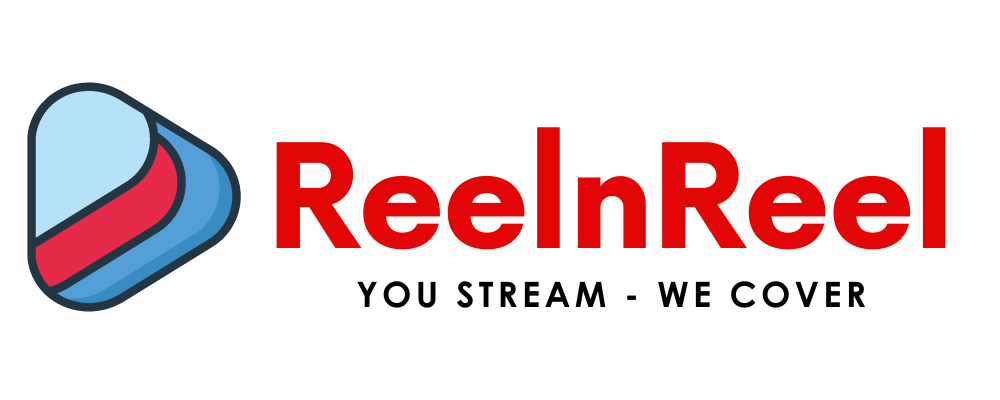To increase your YouTube citations in Google AI Overviews, focus on aligning your YouTube SEO strategy with Google’s prioritization of video content in AI-generated search results.
Recent data reveals a 25.21% surge in YouTube citations within Google AI Overviews. This trend represents a fundamental shift in how Google incorporates video content into its search results, offering new opportunities for content creators and marketers to increase their visibility.
Understanding Google AI Overviews
Google AI Overviews are concise summaries that appear at the top of search results, providing users with quick answers to their queries. These summaries can now cite YouTube videos directly, creating new pathways for content creators to reach their audience.
The Technical Landscape for YouTube Videos for AI Overviews
In the evolving landscape of search engine algorithms, Google’s AI Overviews have demonstrated a significant shift toward video content integration, with YouTube citations experiencing a 25.21% surge since January 2025. This technical analysis explores the underlying mechanisms, implementation strategies, and optimization techniques for maximizing YouTube visibility in AI-generated search results.
Content Types Seeing Highest Citation Growth
Create AI-Friendly Video Content
AI Overviews favor YouTube videos that provide clear, informative, and structured Content. The following content types see the highest citation growth:
- Instructional Content (+35.6%) → “How-to” tutorials and step-by-step guides
- Visual Demonstrations (+32.5%) → Hands-on, product demos, styling guides
- Verification/Examples (+22.5%) → Product comparisons, case studies, real-world examples
- Current Events (+9.4%) → Timely, news-based, and event-driven Content
Strategy: Focus on Content that simplifies complex topics with visuals and structured explanations.
Optimize Metadata for AI Search Recognition
Google’s AI Overviews extract information from titles, descriptions, and transcripts. Optimizing these elements ensures better recognition:
- Title: Use primary keywords early in the title (e.g., “How to Rank YouTube Videos in AI Overviews – Video SEO Guide”)
- Description: Include key phrases in the first 200 characters
- Tags: Use broad & niche tags to improve discoverability
- Closed Captions: Add subtitles & transcripts (AI scans them for citations)
Strategy: Use structured metadata, include timestamps for important sections, and provide bullet points in the description to match AI Overview styles.
Improve Video Structure for AI Summarization
Google’s AI watches and listens to videos to extract key points. Ensuring clear structuring makes your video easier to summarize in AI Overviews.
Key Best Practices:
- Use on-screen text or subtitles to reinforce key messages
- Break Content into segments (use chapters/timestamps)
- Include a strong summary at the end of the video
- Use numbered steps or bullet points (e.g., “5 Steps to Rank on Google AI Overviews”)
Strategy: Google’s Gemini model prioritizes videos that are easy to summarize, so make your Content digestible.
Increase Engagement Signals (CTR & Watch Time)
AI Overviews prioritize high-quality, authoritative videos. Engagement metrics influence citations.
Boost Engagement:
- Create eye-catching thumbnails to increase CTR
- Encourage comments and likes (ask questions, pin top comments)
- Embed videos in high-traffic blogs (Google favors cross-platform engagement)
- Keep viewers watching → Use hooks, storytelling, and visual cues to retain the audience’s attention
Strategy: Videos with higher watch time and interactions are more likely to be cited in AI Overviews.
Focus on in-depth, authoritative video content if your Content aligns with these high-citation industries.
Use AI Tools to Optimize Your Videos
AI tools can enhance keyword research, video structuring, and performance tracking:
- TubeBuddy / VidIQ – Helps find trending keywords and optimize titles
- Google Trends & YouTube Search Analytics – Identify popular search topics
- ChatGPT & Gemini AI – Generate video scripts & optimize descriptions
- Descript / Otter.ai – Transcribe and create subtitles for better indexing
Strategy: AI tools can automate parts of your video SEO and enhance discoverability.
Maximize YouTube & External SEO Synergy
Google prefers multi-platform authority when choosing Content for AI Overviews. Enhance your YouTube SEO by:
- Embedding videos in blog posts and linking from high-authority websites
- Sharing videos across social platforms (Reddit, Twitter, LinkedIn)
- Using structured data markup (Schema.org VideoObject) to enhance search visibility
Strategy: Google ranks YouTube content higher when it has external validation via backlinks and embeds.
Stay Updated on AI Overview Trends
Google’s AI Overviews are expanding into multiple markets, including India, the UK, Mexico, Japan, and Brazil. Google is also testing new ways to display citations, making it easier to click on linked sources.
Strategy: Stay ahead by monitoring SEO updates, analyzing AI citation trends, and adjusting your video strategy accordingly.
Technical Architecture of YouTube Citations
Multimodal AI Processing
Google’s implementation of the Gemini multimodal model has revolutionized how video content is processed and cited. The system now:
- Processes audio transcripts through natural language understanding (NLU) models
- Analyzes visual elements using computer vision algorithms
- Integrates temporal metadata for context-aware citations
- Implements cross-modal attention mechanisms for coherent understanding
Citation Ranking Factors
The technical framework for YouTube citation ranking includes:
Python Copy:
citation_score = {
‘content_relevance’: 0.35, # Semantic matching
‘engagement_metrics’: 0.25, # User interaction signals
‘technical_quality’: 0.20, # Video/audio quality
‘authority_signals’: 0.15, # Channel credibility
‘freshness_factor’: 0.05 # Temporal relevance
}
Implementation Strategy
Technical Optimization Framework
Video Asset Optimization
Javascript Copy:
// Recommended technical specifications
const videoSpecs = {
resolution: ‘1080p minimum’,
frameRate: ’30fps+’,
audioBitrate: ‘128kbps+’,
codecPreference: [‘VP9’, ‘H.264’],
containerFormat: ‘MP4’
};
Metadata Structure
json Copy:
{
“video”: {
“title”: {
“primary_keyword”: “position_0_to_60_chars”,
“semantic_context”: “industry_specific_terms”
},
“description”: {
“summary”: “first_200_chars”,
“detailed_content”: “structured_paragraphs”,
“timestamps”: [“key_moments”],
“technical_specs”: [“parameters”, “methodologies”]
}
}
}
Industry-Specific Implementation
Healthcare Sector (41.97% Citation Rate)
Technical requirements:
- HIPAA-compliant Content structuring
- Medical terminology optimization
- Evidence-based content verification
- Structured data markup for medical procedures
E-commerce Sector (30.87% Citation Rate)
Implementation focus:
- Product schema markup
- Technical specification documentation
- Comparative analysis frameworks
- Transaction-oriented content structure
Content Type Optimization
Instructional Content (35.6% Increase)
Technical implementation:
python Copy
def optimize_instructional_content():
structure = {
‘introduction’: {
‘problem_statement’: str,
‘technical_requirements’: list,
‘prerequisites’: list
},
‘main_content’: {
‘steps’: list,
‘technical_details’: dict,
‘code_samples’: list
},
‘validation’: {
‘success_metrics’: list,
‘troubleshooting’: dict
}
}
return structure
Visual Demonstrations (32.5% Increase)
Technical specifications:
- Frame-by-frame analysis capabilities
- Motion tracking optimization
- Visual clarity metrics
- Temporal segmentation
Advanced Implementation Techniques
AI-Driven Optimization
Implementation of machine learning models for:
- Content relevance prediction
- Engagement optimization
- Citation probability scoring
- Semantic analysis of video content
python Copy:
class CitationOptimizer:
def __init__(self):
self.ml_models = {
‘relevance’: RelevancePredictor(),
‘engagement’: EngagementOptimizer(),
‘semantic’: SemanticAnalyzer()
}
def optimize_content(self, video_data):
scores = {}
for model_name, model in self.ml_models.items():
scores[model_name] = model.predict(video_data)
return self.generate_recommendations(scores)
Technical SEO Integration
Schema Markup Implementation
json Copy:
{
“@context”: “https://schema.org”,
“@type”: “VideoObject”,
“name”: “Technical Implementation Guide”,
“description”: “Step-by-step technical process”,
“thumbnailUrl”: “https://example.com/thumbnail.jpg”,
“uploadDate”: “2025-02-14”,
“duration”: “PT5M49S”,
“contentUrl”: “https://example.com/video”,
“embedUrl”: “https://example.com/embed/video”,
“interactionStatistic”: {
“@type”: “InteractionCounter”,
“interactionType”: “https://schema.org/WatchAction”,
“userInteractionCount”: “5647”
}
}
Performance Monitoring and Analytics
Technical Metrics Framework
python Copy:
class CitationMetrics:
def __init__(self):
self.metrics = {
‘visibility_score’: self.calculate_visibility(),
‘engagement_rate’: self.calculate_engagement(),
‘citation_frequency’: self.track_citations(),
‘conversion_impact’: self.measure_impact()
}
def generate_report(self):
return {
‘metrics’: self.metrics,
‘trends’: self.analyze_trends(),
‘recommendations’: self.generate_recommendations()
}
Real-time Monitoring System
Implementation of:
- Citation tracking algorithms
- Performance Analytics
- Engagement metrics
- Conversion tracking
- A/B testing frameworks
Future-Proofing Strategies
Technical Adaptability
- Implement modular content structures
- Develop scalable metadata frameworks
- Create adaptive optimization algorithms
- Maintain flexible implementation patterns
Innovation Integration
- Experimental feature testing
- Progressive enhancement strategies
- Emerging technology adoption
- Continuous optimization protocols
Strategic Optimization Guide
Content Creation Strategies
Focus on High-Performance Content Types:
- Create detailed instructional videos
- Develop clear visual demonstrations
- Produce verification-focused Content
- Cover current events in your niche
Optimize Video Elements:
- Use target keywords naturally in titles and descriptions
- Place primary keywords near the beginning of titles
- Include modifiers like “best,” “how-to,” or “guide.”
- Write comprehensive, searchable descriptions
Technical Optimization:
- Add transcripts to improve discoverability
- Include closed captions for accessibility
- Utilize AI tools for keyword analysis
- Optimize video file names with target keywords
Future Outlook and Recommendations
Adaptation Strategies:
- Monitor AI Overview trends regularly
- Adjust content strategies based on performance
- Stay informed about algorithm updates
- Focus on quality and relevance
Measurement and Improvement:
- Track engagement metrics
- Analyze citation rates
- Monitor industry-specific trends
- Adjust strategies based on performance data
SEO Integration Strategies
Video Distribution Approach
Multi-Format Strategy:
- Create main evergreen Content
- Break down longer videos into shorts
- Distribute across multiple platforms
- Maintain consistency across channels
Cross-Promotion Tactics:
- Embed videos on relevant website pages
- Share on social media platforms
- Include in email newsletters
- Add to blog posts and articles
This trend represents a significant shift in how Google incorporates video content into search results. By focusing on high-quality content creation, proper optimization, and strategic distribution, creators can leverage this opportunity to increase their visibility in Google AI Overviews.
Final Takeaway:
The 25.21% increase in YouTube citations in AI Overviews signals a new era for video-based SEO. To boost your visibility:
- Create AI-friendly Content (how-to, demos, verification)
- Optimize metadata & transcripts for AI parsing
- Structure videos for easy summarization
- Increase watch time & engagement
- Target high-citation industries
- Use AI tools for optimization
- Leverage external SEO & backlinks
- Stay updated on AI Overview trends
By aligning your YouTube strategy with AI-driven search trends, you can increase your chances of being cited in AI Overviews gaining more visibility, traffic, and authority in Google Search.
The technical implementation of YouTube citation optimization for Google AI Overviews requires a sophisticated understanding of video content optimization and AI-driven search algorithms. Success in this domain demands technical expertise, strategic implementation, and continuous adaptation to evolving AI capabilities.
By following these technical implementation guidelines and focusing on industry-specific requirements, content creators and technical teams can maximize their potential for YouTube citations in Google AI Overviews. The key lies in maintaining technical excellence while adapting to the evolving requirements of AI-driven search systems.





